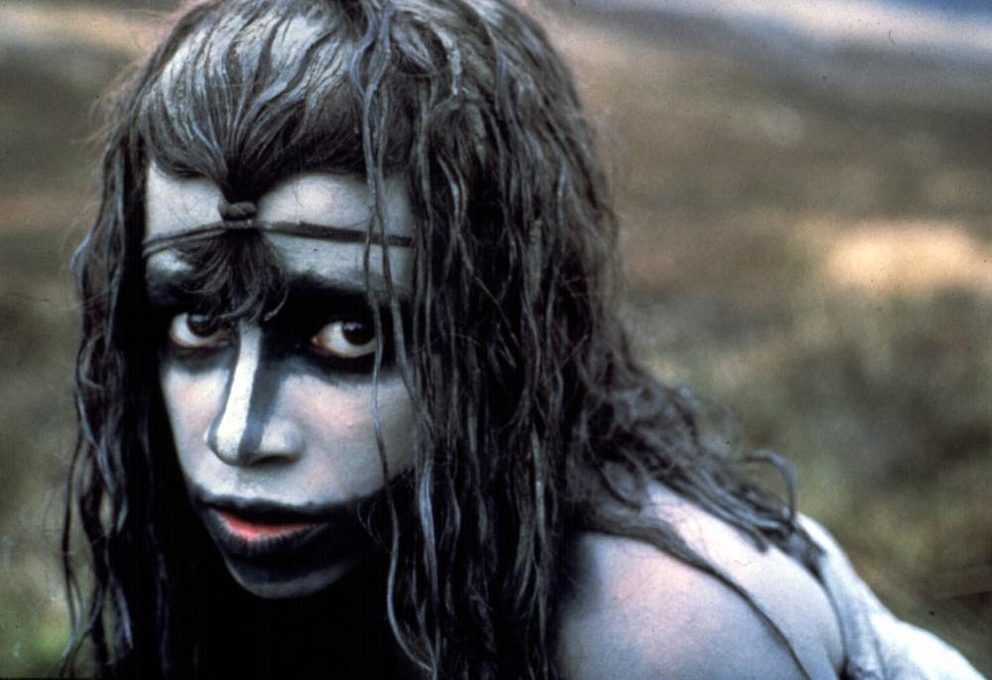NYC
Fire Master
by | Jan 25, 2024 4:43 pm
Post a Comment | E-mail the Author

Quest for Fire
Woodbine
Queens, N.Y.
Jan. 24, 2024
The other night I was arguing with a clown. We’d gotten into the heated weeds on a subject neither of us were at all qualified to speak on, but it was past midnight and good bar talk is built on aggressive, unchecked conjecture.
The central question of our debate, put in a sufficiently anthropological way, was the connection between, and refinement of, somatic and spoken communication in early hominids.
We’d agreed that the first line-of-work had to have been the hunter or the gatherer. Once there were resources accrued for exchange, it seemed reasonable enough that the old line of prostitution’s being the first profession could be assumed and taken without controversy.
But, and here was our pickle, which came next — the clown or the poet?
We both obviously had our own vocations as front-runner — my clown friend making his case that pantomime was paramount to early communication and thusly that storytelling would have taken a firmer foothold in dance and play-acting; and I making my case that verbal utterance, even in primitive groups, would have still been more easily refined, thus bringing poetry into existence before sophisticated situational slapstick.
We didn’t settle our debate. It was time instead to roll dice and bet dollars.
Fortunate that the next night I was to attend a screening of Jean-Jacques Annaud’s 1981 film Quest for Fire at the Woodbine in Ridgewood, Queens.
I’ve been meaning to see this movie since I was teenager and first encountered its cover in the Wal-Mart bargain bin. I’ve an unbridled fascination with prehistoric and ancient humanity. This little lost gem of a film felt eerily tailored to my personal taste.
My argument with my clown friend haunted my viewing of this film. Synopsizing shortly as to avoid spoilers, Quest for Fire centers around three Cro-Magnon men on a continent spanning search for, you guessed it, fire. Our story takes place 80,000 years ago when, at least for our protagonists, the means for creating flame were still a mystery. Fire, if there was going to be any, had to be harvested and kept burning. Their tribe carries with them a vessel of bone, a cage of sorts, that holds always the living ember of their previous night’s campfire. After an ambush from an even more primitive tribe, their flame is extinguished, and the three men must go off in search of some small roiling to bring back to their women, children, and elderly. That should be enough to set us up.
Now, the anthropology of the film is … shotty. Very shotty, actually. And there are highly ungenerous possible readings to the, let’s say, differences between the various tribes our protagonists encounter, and if Annaud didn’t know what he was doing this film could very well have been stricken from the record of arty things to watch with friends. But! Annaud is a master — his film is beautifully shot, the brutal innocence of his prehistoric humans is almost heartbreaking, and the score might be one of my favorites I’ve ever heard (some lovely combination of Stravinsky, French Impressionism, and atonal bombastics — again, if this movie was made for anyone, it was made for me). Annaud’s approach to his story is one of unjudging ambivalence; sophistication and savagery hold equal sway in every group our heroes adventure toward.
Fundamentally, Quest for Fire is about the exchange of ideas and information, about the limits of one’s perception, and culture as emergent from material conditions. By the end of the film our protagonists have not only secured fire but learned how to make it for themselves. Through the exchange with other tribes along the way, violent and horrific as it was, the very nature of reality has changed. The utterances of the characters of this film were constructed by none other than Anthony Burgess, author of A Clockwork Orange—a grunting language from which a keen audience will be able to parse a few words. When the returning party sets to demonstrate the method for making fire a new word appears in their speech. The final scene takes place around this fire, with one of our heroes pantomiming a story about the mammoths and other monsters they encountered on their long journey. Another of our adventurers nuzzles up with a young woman and, a more settled lifestyle blooming before their very eyes, there are inklings of what we would now call Love.
Last word on this wonderful evening: That this film was screened at a space like Woodbine cannot go unmentioned. When I first moved to NYC there were tons of spaces like this, and they’re where I met most of my friends of the last seven or so years. Woodbine is a continuation of great tradition of politically active DIY cultural spaces. They regularly host readings, concerts, and lecture series. Outside of events, though, they are active the community, fostering the exchange of ideas through tutoring meetups, food pantries, and any number of other boots-on-the-ground actions.
Though the larger institutions would have it otherwise and for a price, places like Woodbine are the lifeblood of cultural exchange in this city. Anders J Lee (the Wednesday movie night curator) and his compatriots should be duly proud of they’ve done here.
Check out the movie. Check out the space.
The clown and I will duke it out again soon…